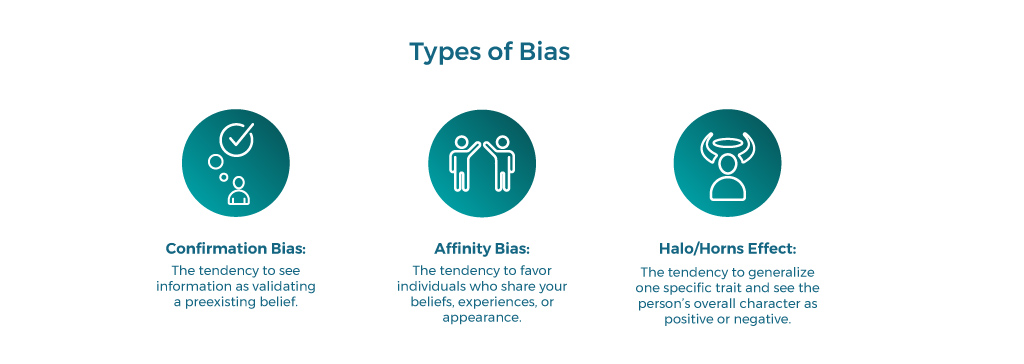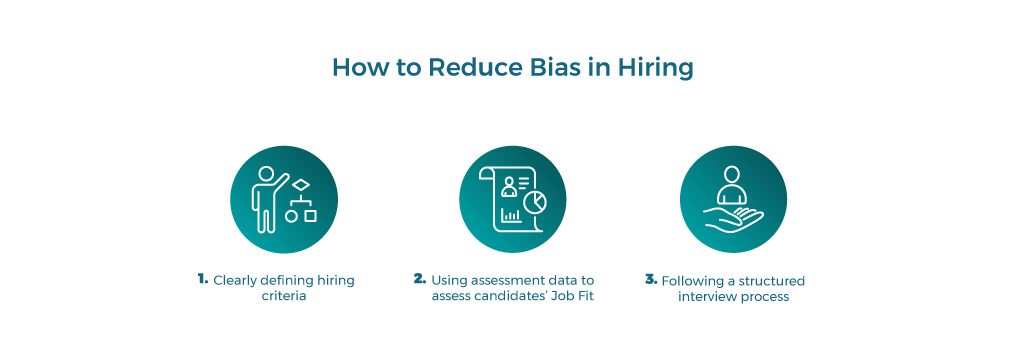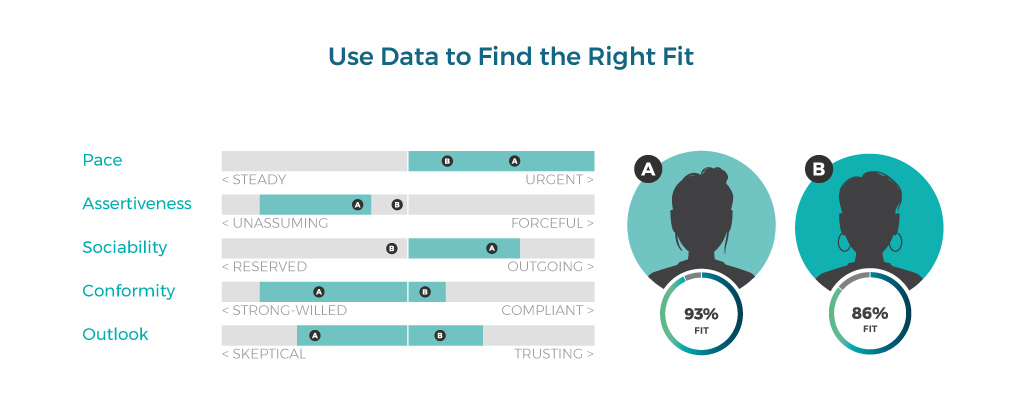
It’s easy to rely on past experiences, beliefs, and instincts to make speedy hiring and selection decisions, but all three are one-way tickets for unconscious bias to enter your organization.
The fact that unconscious bias is called “unconscious” is significant. These biases are deeply embedded in even the smallest everyday actions making them difficult to recognize, much less act on. In the context of hiring and selection, unconscious bias can lead your organization to inadvertently overlook great candidates, and derail efforts to create a diverse and equitable workforce.
It’s tricky to identify and counteract unconscious bias, but don’t worry, we’ll explain what it is and how you can use data and a structured hiring process to reduce bias in your organization.
How to Start Seeing Unconscious Bias
One way to start seeing bias is to understand what it is.
The general definition of unconscious bias is the automatic associations anyone might make involving characteristics such as race, age, gender, disability, height, weight, accent, and beliefs derived from prior experiences—and how those associations impact interactions with others in those groups. Bias can present itself in multiple ways.

For example, what type of person comes to mind when you picture an elementary school teacher, a Fortune 500 executive, or a construction worker? If you’re like most people, you have a picture in your mind, maybe not a specific person, but you could probably specify how old the person is, as well as their race, gender, personality, or values.
There is nothing wrong with the fact that you naturally conjure an image of someone in those roles—most people’s minds work that way. However, when interviewing real-life candidates, you don’t want that mental image to influence your judgment of the actual person. You wouldn’t want to inadvertently skip over a great candidate in favor of someone who you think might be a good fit based on your biases.
How to Reduce Unconscious Bias
The fact that bias is often unconscious is a significant part of the problem. So, the first step to reducing bias is to make ourselves more conscious of our biases.
1. Raise Awareness
However, it takes more than one training session to address the problem. Training may help employees begin to see their own biases, but it needs to be ongoing. It should include small group discussions; and opportunities to practice skills, get feedback and build relationships.
2. Tackle Structural Issues
As helpful as training and other awareness-raising efforts can be, they’re not a complete solution. There may also be structural issues that can open the door to bias. Hiring processes are among those corporate structures that enable bias.
Research conducted by PXT Select® reflects just how prominent this issue is. In one survey, 90% of respondents identified hiring and selection as the primary organizational process that could be affected by unconscious bias. Recruitment, promotion, and succession planning are potential trouble spots, too, along with interviewing and résumé screening, which is why it’s critical to create structured, data-driven hiring processes.

Structured processes help hiring managers select the best candidates and reduce the impact of unconscious bias. Furthermore, consistent, reliable data helps alleviate overreliance on instinct.
For example, the data from PXT Select assessments helps hiring managers learn about their candidates on a deeper level. This kind of objective data sheds light on all candidates’ cognitive abilities, behavioral skills, and interests to determine if they’ve got what it takes to do the job and if they’ll enjoy it.

Did You like This Content?
Join our newsletter to get insights,
updates and more!

Found this post useful? Share it.